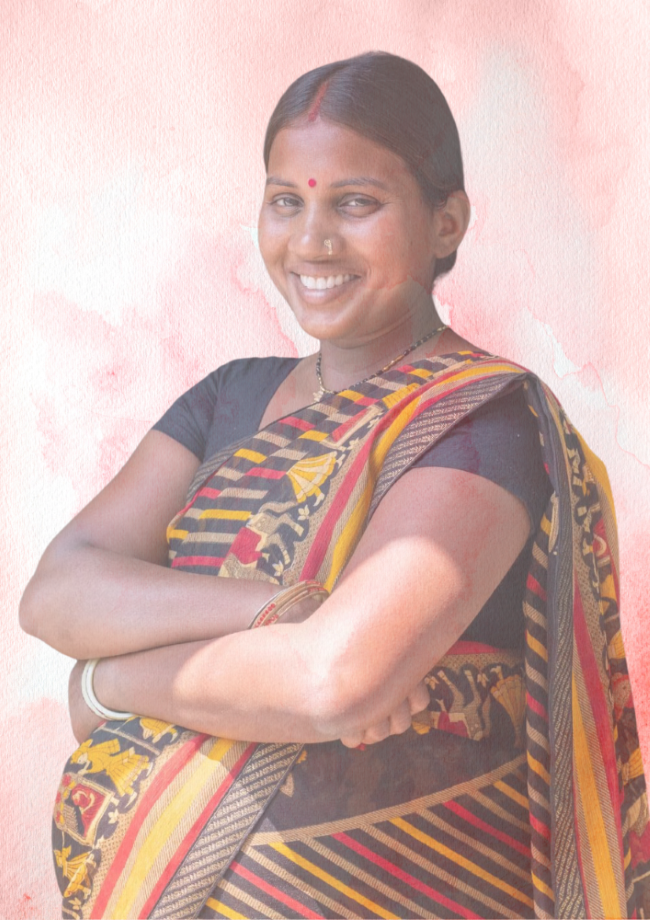UNFPA’s State of World Population Report 2025, titled The real fertility crisis: The pursuit of reproductive agency in a changing world, shines a much-needed light on the realities of vast numbers of people who are unable to create the families they want.
The report shares the findings of what people, across 14 countries – including from Asia – actually want for their reproductive lives and futures, and whether they believe they will be able to realize those ambitions. The overarching finding is that too few people are able to exercise true choice when it comes to some of the most intimate and consequential decisions in their lives.
This story from India, originally published in the report, shares insights of three generations of women from the Devi family in Bihar – Saraswati (64), Anita (42), Pooja Kumari (26). These women highlight just how much has changed in India over the past 65 years, in relation to fertility aspirations.
India is now the world’s most populous nation, with nearly 1.5 billion people – a number expected to grow to about 1.7 billion before it begins falling, around 40 years from now (UN DESA, 2024). Behind these numbers are the stories of millions of couples who decided to start or expand their families, as well as the stories of women who had few choices about whether, when or how often they became pregnant.
In 1960, when India’s population was about 436 million, the average woman had nearly six children. Back then, women had less control over their bodies and lives than they do today. Fewer than 1 in 4 used some form of contraception (UN DESA, 2024), and fewer than 1 in 2 had attended primary school (World Bank Data, 2020).
But in the years that followed, educational attainment increased, access to reproductive healthcare improved, and more women gained a voice in the decisions that affected their lives. The average woman in India now has about two children (UN DESA, 2024). While women in India, and every other country, have more rights and choices today than their mothers or grandmothers did, they still have a long way to go before they are empowered to have the number of children they want – if any – when they want them.

Saraswati Devi, age 64 In 1976, Saraswati Devi was married at age 16. By the time she was 30, she had given birth to five sons. All the other women in her village had about that many children. If women had fewer, people thought they were sick, Saraswati recalls.
That was a time when large families were seen as both a blessing and an economic necessity. Having children then was considered “God’s gift”, she says. “My mother-in-law always said, ‘The more children you have, the more hands there are to work in the fields.’”
Conversations around pregnancy spacing or limiting family size were rare. “We didn’t know about contraceptives back then,” she says. “We didn’t know how to delay or prevent pregnancies, and we were too afraid to ask.” Pressure from friends, neighbours and especially her mother-in-law had an outsized influence on how many children she had, Saraswati says. “When I wanted to stop having children, my mother-in-law insisted that I continue, and I could not disobey her.”
If she could do it all over again, Saraswati says she would have had fewer children.

Anita Devi, age 42 Anita Devi, Saraswati’s daughter-in-law, married at 18 in the late 1990s. Unlike her mother-in-law, Anita knew about and could have obtained family planning from the health workers who visited her village. Nevertheless, she ended up having six children; four daughters and two sons. “My husband and mother-in-law wanted more children, especially a son,” Anita says. “I felt exhausted, but I had little say in the matter.”
She adds, “I initially wanted only one or two children, just one girl and one boy. We are poor, and raising a large family is difficult… But talking about family planning was not easy in my family, and my husband was against contraception.”
Today, she reflects, “Despite our struggles, I am happy with my family. All my children have received some education. I divide my time between working in the home and helping my husband on the farm.”

Pooja Kumari, age 26 Anita’s daughter Pooja Kumari graduated from university before marrying at 22. She had her first child at 23. In the following three years, she used contraceptives provided by Accredited Social Health Activist, a group of frontline health workers in her community. She recently decided to have a second child.
“My husband and I have decided to have only two children,” Pooja says. “We want to raise them well, provide them with a good education, and ensure a secure future for our family. With limited financial resources, we believe a small family is best.”
Pooja says that after she gives birth, she plans to work and contribute financially to her home. “My husband supports my ambitions, and together, we are planning for a stable future.”
Pooja says she learned about reproductive health and rights through Raatri Chaupals, nighttime community assemblies where villagers gather to learn about health and rights through films and discussions. These meetings boosted her confidence to have conversations with her husband about the number and timing of her pregnancies. Women like Pooja, having both contraceptive services and the support of their communities and families, are part of a new generation with the knowledge and power to realize their fertility goals.
Download UNFPA’s State of World Population report 2025 and learn more


